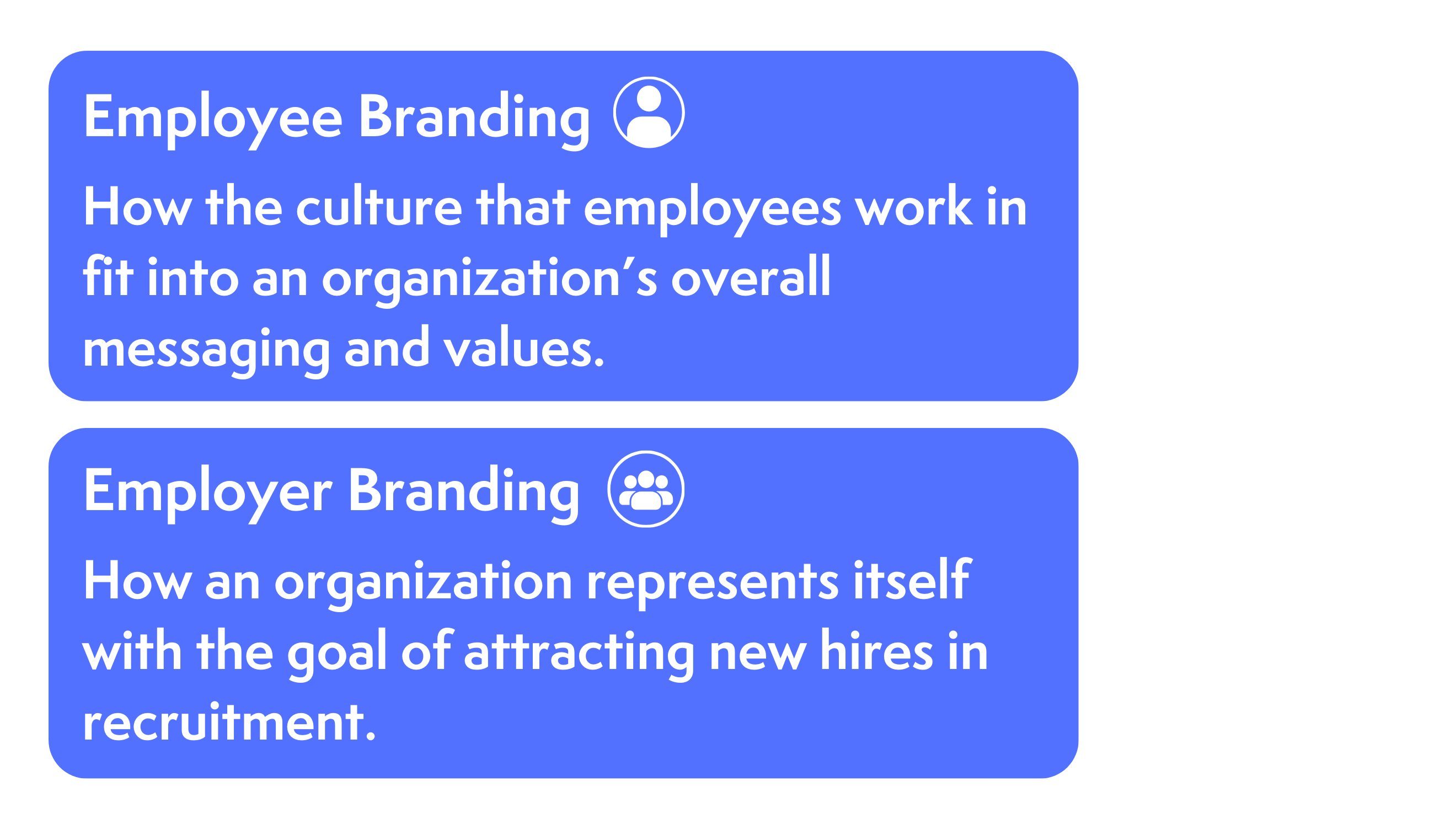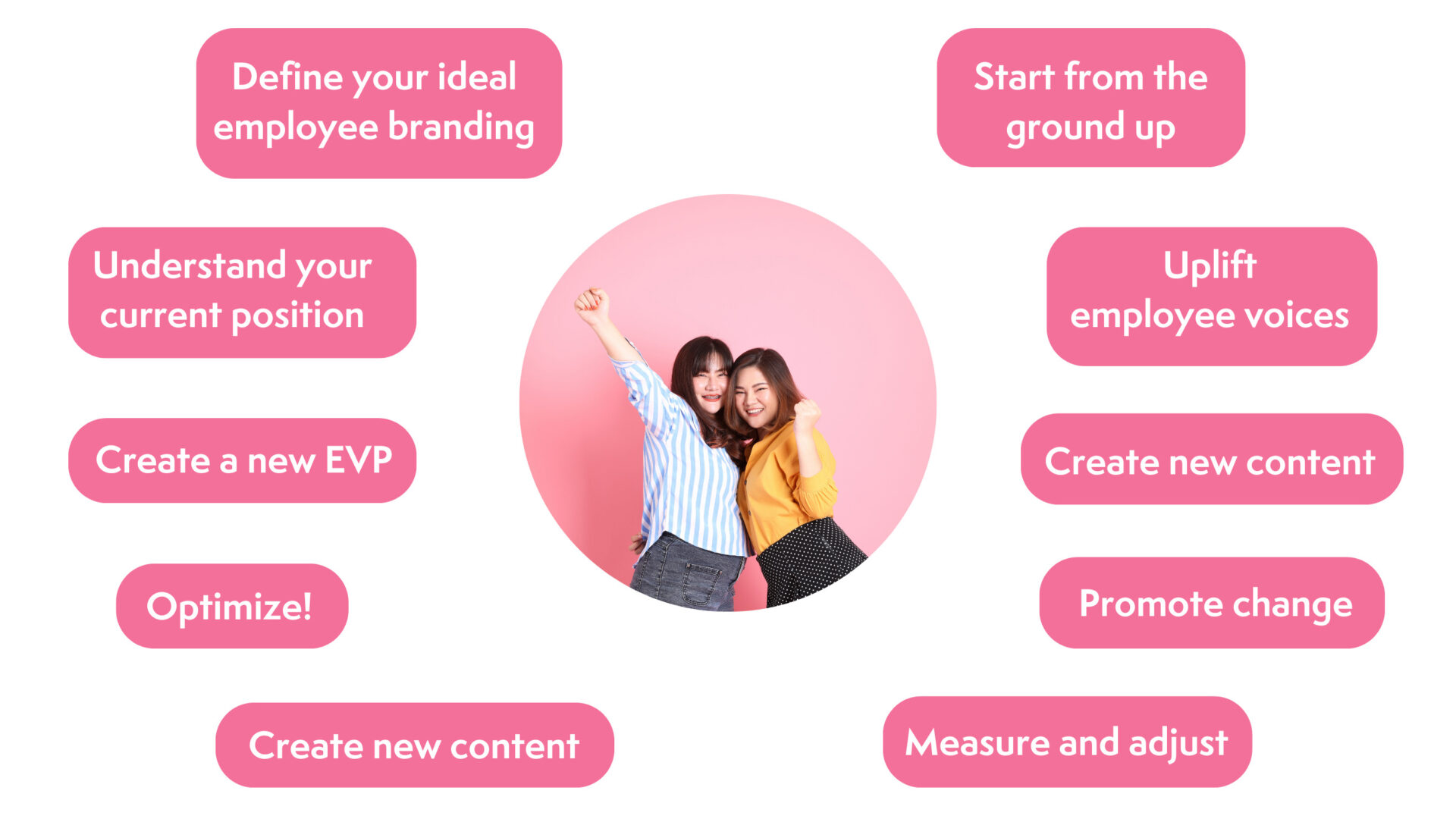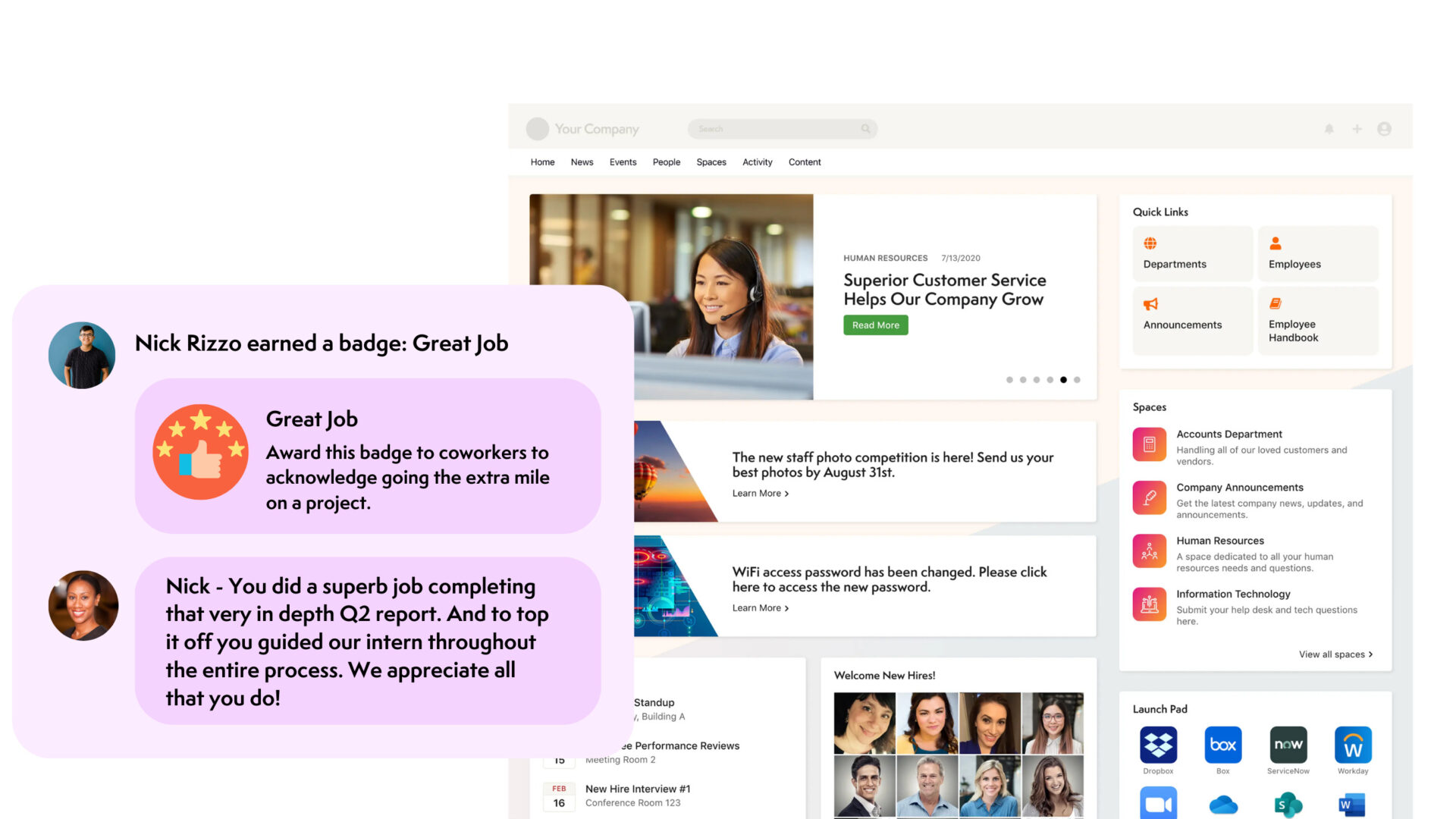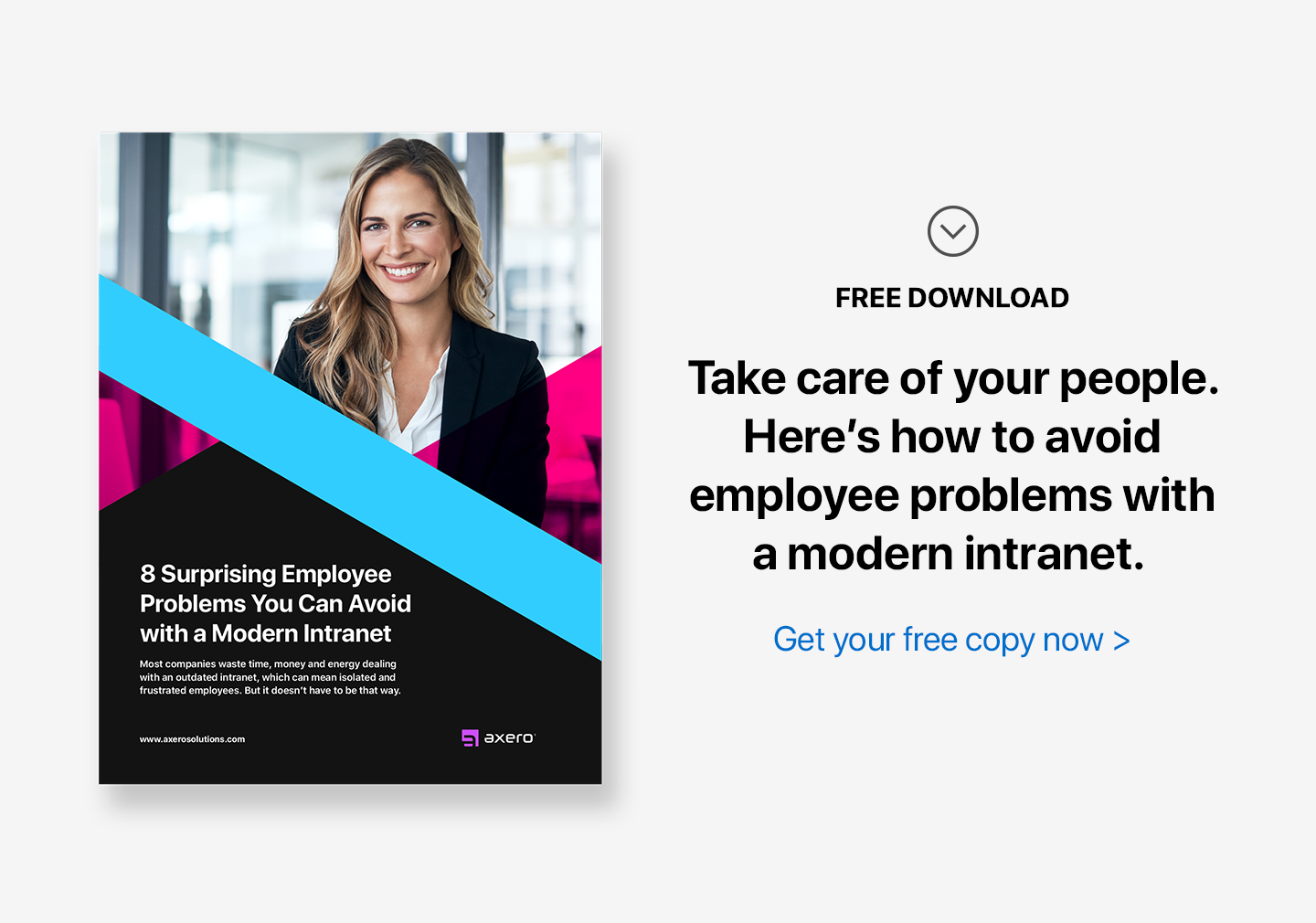Branding is an incredibly important part of any business. While we expect branding to speak to your customers to attract attention to your services and products, they aren’t the only audiences you need to speak to. There’s another big group that you need to appeal to: your employees.
Some employees may have applied to your company because they were a fan of you as a consumer and they wanted to help further your brand. Others may have found you through a job posting and used your vision statements and brand to understand your company. It’s best to present and actually follow through with yourself as a fun and interesting company to work for, and as a place where people can build long-lasting careers.
This is only half of the equation, though. You can do all the work imaginable to create the perception of being a good company, but you need to walk the walk and instill an environment where employees are legitimately happy. Nearly 50% of workers have considered leaving their jobs in 2024. This is where a positive employer brand comes in handy. Chances are higher that you can attract some of that incredible talent looking for greener pastures while also keeping those you already have motivated and on your team.
Let’s take a closer look at employee branding, why it is important, and how you can build a workable strategy that highlights all the good things your company has to offer!
What is employee branding?
We all know customer branding is about highlighting the great aspects of your company and building strong connections so you can enjoy repeat customers. Employee branding is cut from the same cloth; it just looks a little different. Rather than making your products or services look great, you instead want to make your company seem like a great place.
People don’t just want their pay, a PTO allowance, and the mundane pizza party to say thank you for all the hard work. They want to know that they work for a good company that actually values them and offers support when they need it. They want an employee experience that builds them up in and out of the office.
A great employee brand will be one that showcases all of this positively. Employees are on board with the company values and mission, whatever they may be, and this is then communicated to not just potential candidates but customers and stakeholders too. After all, a lot of people don’t want to support unethical companies that treat their employees terribly, no matter what they might be selling.
How is employee branding different from employer branding?

You may also see the words employer branding thrown about here and there. This is slightly different from employee branding, and we’d like to make these differences as clear as possible, though there are some overlaps between them.
Employer branding is focused on recruitment. A good employer brand policy aims to get a ton of applications on every job advert. When compared to their closest competitors, they want to be the best by a clear mile. It all comes down to the reputation that the organization can create for themselves.
Employee branding, on the other hand, focuses on the employees themselves. What is the reputation of senior management and the company as a whole within the wider workforce? Do they go home and speak to their friends and family in positive terms? If potential employees contact them to ask a few questions or to get a referral, would they feel able to answer truthfully?
As you can see, employee branding does play a role in recruiting. However, it goes much further and deeper than that, feeding into employee retention too so that management can ensure that employees are happy from the moment they hit “apply” to even when they have moved on and gone to a new role elsewhere.
Why is employee branding important?
Employee branding plays a vital part in tracking whether employees are actually happy and motivated. Lots of conversations around employee happiness tend to focus on or correlate to productivity, engagement, and retention. It becomes a conversation about numbers and data and not about what employees truly want.
Employee branding looks to ensure that a good company culture is in place so that everyone is happy at work. Happy employees naturally want to deliver their best. They want to come to work, do a good job, and deliver great results. Employee branding is important because it lays out the plans and expectations of the company. If there is then a disconnect between the real and lived experiences of the employees, it is clear that something needs to change internally.
How to create an employee branding strategy
So, you have decided to create a formal employee branding program for your company. How do you go about doing this? We thought we’d break things down into 10 easy steps to help you.
1. Define your ideal employee branding
First, you need to establish exactly what your ideal employee branding strategy might look like. Include all of the values that you want your employees to embody. You also need to consider what the overall mission of your company might be. If you are yet to have concrete company core values, now is the time to make them. Maybe you even want to change them to reflect the new direction your company is headed in.
This is also a great opportunity to pin down your unique selling points. What is it that sets you apart from your competitors? Knowing this can help you to create a great strategy that resonates with everyone.
2. Understand your current position
To make changes, you have to understand where your company currently sits. Do you think things are generally good, or are you aware of where cracks are beginning to show?
Ultimately, you need to ask your employees what their current perceptions are. Do they know what the mission and values of the company are, and if yes, do they feel aligned with them? You can quickly gain insights into what your employees are thinking using surveys. Believe it or not your corporate communications strategy plays a huge role in figuring out and communicating your vision. Have your comms team send a survey on the employee intranet to gather everyone’s thoughts.
3. Create a new EVP
At this point, you should have where you would like to be, and the place you currently are, and a new employee value proposition should create the route between them. An EVP is an important document that all employees should have access to, and it lays out the expectations of both the company and the employees. Consider it an agreement on behalf of the company to offer a certain experience to its employees.
In addition to making the EVP visible to current employees, don’t forget to add it to your careers page too. It could play a key role in appealing to potential new hires.
4. Optimize, optimize, optimize!
Having created a bunch of new policies, you now need to make sure that they are reflected across the site. There will no doubt be several areas that you need to update. While your focus might be on updating the employee intranet and other areas that only staff will see, don’t forget to also update your job postings and recruitment portal so you have one unified brand image.
While you are at it, hop onto LinkedIn and other social media platforms and start creating some buzz there too! Who knows who will see your post? It could be a mutual in your industry who is happy to pass on a recommendation to a job seeker, but they might not do so if they hadn’t first seen your optimized social media.
5. Start from the ground up
One of the best places to start with this new rollout of policy is with the newest employees. Since employee branding can play a role in the hiring process, employees will likely have expectations around their first day and wider onboarding process. This is a critical time when your new employees will get to see if the company brand you crafted for them during recruitment is the same as reality. Make sure that there aren’t any skeletons in the closet for them to find!
If new employees have a stable start, they should step into their roles with more confidence. We know sometimes it is preferable to have a new hire hit the ground running, but you should try to cushion their landing a little. Recruiting costs can also run high; you want to make sure you find the right candidate quickly rather than needing to go back to recruitment repeatedly!
6. Uplift employee voices
A strong employee brand is tied to the employees themselves. If management does not put in the effort to uplift their voices and ensure employee satisfaction is high, you are not going to see a successful rollout of your employee branding strategy. A company’s reputation can easily be brought down by its employees if they are dissatisfied or feel disillusioned with the direction the organization is moving in.
7. Refresh manager training
Managers and senior leaders need to be the champions of these new company values so they can inspire their teams to also uphold them. They should know these policies inside and out so they can also ensure that their teams are fully aligned with them. In addition to this employee engagement, it can also be beneficial to refresh your managers’ communication and collaboration skills to ensure that teams are able to work together properly.
8. Create new content
With all of this new effort being put into building a positive corporate brand, you need to make sure that you have the content to celebrate it! From your social media to your company website, you need to make sure that you are creating new content that really celebrates your new initiative.
Don’t be afraid to ask for employee perspective. Getting them to talk about your company’s culture and what they like about it can be used to create blogs and other testimonials that might be just the thing to catch the eye of job seekers.
9. Promote change
Whether you create an employee or employer branding strategy, you need to make sure that it is not just a one-and-done policy that is left until its next review. Allow this to be a catalyst for change, and a chance for you to sit and look through the company to find out where change is needed the most.
Start with the actual makeup of the company. Do you have a concentrated effort to boost diversity and inclusion efforts? Do minorities feel welcomed in the company, and do they actually have the chance to make a difference in their time here?
You should also look into your current learning and development schemes. Remember, any learning and development should benefit your current employees and the direction they feel their career is headed in. A strong employer brand will be one that celebrates how its workers change and harness their own careers. If they want to develop new skills that don’t align with their current job description, you should still let them do so. They may be able to move to a new position in your company, or at a minimum, they can offer great and honest employee referrals when candidates ask them about the company.
10. Measure and adjust
What’s the point in setting up a new policy if you aren’t going to measure its success? As with other initiatives, a successful and positive employee brand doesn’t spring up from nowhere. You might nail it the first time and get buy-in at every layer of the company. However, you might also find that things aren’t quite there yet, and that is fine—you just need to adjust a little.
Define a test period for the new policy, such as tracking over the next quarter, and see if everything is well-received or vice versa. You might need to make a few tweaks, or you may have to go back to the drawing board altogether, but it will all be worth it in the long run.
How can a company intranet boost employee branding?
An intranet is one of the most important tools your company could introduce. It is an easy way for you to connect your employees no matter where they are located around the world. Document and knowledge sharing becomes as simple as pushing a button. When someone has something to celebrate, they can do so right there within the intranet. From team discussions to company-wide announcements, your intranet is the place to do it.
Think of it like a social media platform just for your company alone. Every brand has a social media presence nowadays, and brand ambassadors to celebrate it. An intranet gives you the opportunity to do the same, but on a platform where you are the only brand!
Most brand ambassadors tend to be external, either influencers or celebrities who have been hired specifically to celebrate your brand, but these ones are a little bit different. They should be chosen from your workforce and will be the people who embody your values and employee branding the most. They will be the cheerleaders of your policies, and should be visible to all on your intranet. Though they may not be management, they should still be avid communicators who everyone knows.
Want to get started with an intranet of your own? Check out Axero’s mini demo, and start exploring the opportunities you can create for your employees today.
















 info@axerosolutions.com
info@axerosolutions.com 1-855-AXERO-55
1-855-AXERO-55


